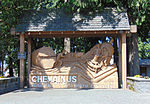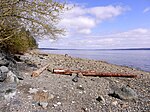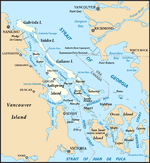Chemainus Secondary School
Chemainus Secondary is a public high school in Chemainus, British Columbia part of School District 79 Cowichan Valley. It was founded in 1953 and serves students from the area around Chemainus, Crofton, Thetis Island and southern Saltair, British Columbia. There are approximately 360 students at the school, the majority of whom are Caucasian, but with many nearby Aboriginal Reserves there is a sizeable First Nations minority. Also, about 30-35 students from Asia, mainly Japan, South Korea, and Hong Kong are enrolled. From 2003 until 2005 the school went through a major renovation, updating many facilities. The library has been twice received Times Colonist Raise a Reader Grants. The first in 2008–9, for $1,400, was directed to Science reading materials. In 2009–10, the school received $1,200 for audio books and the companion novels.
Excerpt from the Wikipedia article Chemainus Secondary School (License: CC BY-SA 3.0, Authors).Chemainus Secondary School
Daniel Street,
Geographical coordinates (GPS) Address Nearby Places Show on map
Geographical coordinates (GPS)
| Latitude | Longitude |
|---|---|
| N 48.9285 ° | E -123.72504 ° |
Address
Chemainus Secondary School
Daniel Street
V0R 4K0 , Chemainus
British Columbia, Canada
Open on Google Maps





